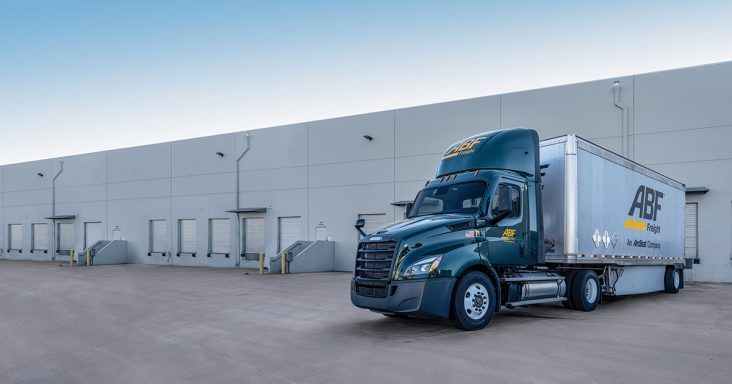ArcBest reports AI cost-benefit of $13 million on route optimization
by September 27, 2024 1:05 pm 469 views

In an April 2024 interview with MIT, Matthias Winkenbach, a principal research scientist and director of research at the MIT Center for Transportation and Logistics, said artificial intelligence (AI) could revolutionize the logistics industry by optimizing delivery routes — a longstanding problem that has only grown more complex with the rise of e-commerce.
This complexity is something Fort Smith-based ArcBest, a logistics and transportation company, has been addressing. Over the past few years, ArcBest has harnessed AI to refine its city route optimization process, a move that has yielded substantial returns. According to ArcBest Vice President of Data Engineering Erica Brigance, the system has saved the company over $13 million since it began integration.
“We’ve been rolling it out for a couple of years and did so fully in 2023. Since that time, it’s provided a significant cost-benefit for us, just by optimizing our existing routes,” Brigance said in a recent interview.
The savings are particularly notable given the increasing complexity of last-mile delivery, where factors such as traffic, weather and customer preferences can introduce costly inefficiencies. ArcBest’s success so far speaks to what Winkenbach referred to as the “vehicle routing problem,” a challenge that logistics companies like USPS, Amazon and FedEx face every day.
That is, finding an efficient route that connects a set of customers that need to be either delivered to or picked up from. The goal is to determine which customers each vehicle should visit on a given day and in what sequence, all while minimizing costs and meeting specific customer requirements.
Traditional operations research (OR) methods have long been used to tackle this problem, often relying on optimization models that define cost functions and constraints to generate efficient routes. However, these models can be computationally expensive and are often based on blanket assumptions rather than specific, real-time data. This is where AI, and specifically ArcBest’s approach, comes into play.
Brigance said ArcBest’s AI solutions are built on a foundation of data and analytics, mostly in-house, that ensure decisions are data-driven and effective in the company’s costliest areas.
“It (AI) is built on a good foundation of data and analytics because without good data, you can’t have good analytics. Without good analytics, I would argue you really can’t have good AI. Those foundational blocks have to be in place,” she said.
ArcBest’s city route optimization system fuses traditional AI and what Brigance describes as “cognitive engagement” — an approach that includes advanced technologies like natural language processing and vision analytics. The company uses the tools to enhance customer interactions and process documents more efficiently, turning customer data into actionable insights that drive better outcomes.
By training models on a large data set, logistics companies like ArcBest can develop AI systems that predict the best routes and adapt to changing conditions on the fly.
“Each service center has unique requirements to make pickups and deliveries for our customers. And those unique requirements can be everything from the profile of the freight that we typically get in that area — is it more residential, is it more industrial, is it more manufacturing, more retail?” Brigance noted.
Brigance continued: “Those types of things can alter how we schedule pickup and delivery routes. There are also characteristics of the city. It’s very different to deliver freight in New York City than it is in Fort Smith, Arkansas.”
For ArcBest, route optimization’s practical application extends beyond cost savings to include improvements in sustainability and customer satisfaction as well. By reducing the miles driven, the company lessens its environmental impact while enhancing its ability to meet customer demands.
“We’re running fewer miles, so there’s certainly a sustainability impact,” Brigance noted. “But it also means we’re able to meet our customer demands better because we have a better line of sight of where we need capacity to either pick up or deliver their freight.”
Another important aspect of AI, Brigance said, is to ensure ArcBest’s workforce is well-equipped and educated on available tools. The company provides guidance to employees on using generative AI tools. It is also looking at formal education plans to upskill employees where needed. But, she notes, AI isn’t always the answer, and is at its best when it’s problem-focused.
“I know AI gets a lot of hype, and I think it has its place, but for us, it’s really about understanding the problem and the challenge that we’re trying to solve. And is AI the right solution for it? And it is the right solution for some of those challenges, but it’s not always the right solution. So, we talk about it as a pragmatic approach to innovation. We want to innovate, but we want to innovate where it makes sense and how it makes sense, not just to say that we’re doing it.”
